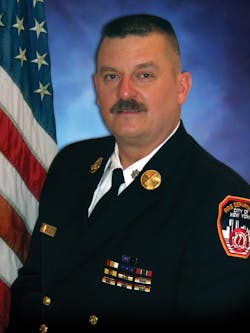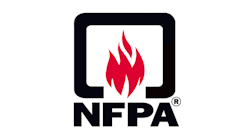I have thought many times about writing an article like this, and the idea keeps returning to me every time I stumble onto a new idea, fact, tradition or tactic that I never knew. Yes, I’m sure many of the following items are not new to some of you, but read along and add any new ones to your list. Some of these items are NFPA standards, and some come from various other regulations and laws. Some are existing tools or equipment that you may not be aware of, and others are simply new ideas. Let’s take a look at this list of interesting fire service-related items:
Did you know …
That every interior firefighter who is not radio-equipped is not only tactically deficient but also not protected by the department’s mayday procedures? If you are not carrying a fireground radio, you cannot transmit a mayday and you cannot receive a mayday transmitted by any other firefighter or officer on scene. A firefighter who is not radio-equipped is not simply ill-equipped, they are seriously under-prepared to handle a life-saving challenge that may arise.
That the threaded discharge after the shutoff on both a 2½-inch and a 1½-inch nozzle are 1½ inches? You stretch a 2½-inch handline for a commercial building because you want more water and better reach. When you remove the tip and look at the thread, you will see a 1½-inch opening. When you stretch a 1¾-inch hoseline for a house fire, if you remove the tip, you will discover the exact same thread. You will be looking at a 1½-inch thread. Hydraulically, it all comes out in the wash, and each of those lines produces dramatically different flows.
That portable radios that are designed and assigned for use inside burning buildings are dangerously unprotected when carried anywhere but under the turnout coat? NIOSH and department investigations of firefighter close calls and line-of-duty deaths (LODDs) on the fireground have concluded that several components of the portable radios carried by interior firefighters can be damaged and made inoperable by the heat and moisture encountered during interior fire attack operations. For this reason, portable fireground radios need to be carried under the turnout coat. The thermal protection that the coat provides to the firefighter wearing it should also be used to protect the radio. Whether the radio is worn on the firefighter’s belt with the remote mic positioned near their face, or whether it is carried in a holder on a shoulder strap under the coat, it needs to be where the heat of the fire and the moisture from the attack hoseline cannot penetrate and damage sensitive components. The remote mic and the attached wires are the most sensitive and easily damaged components.
That the term mayday, which is an international radio distress signal, comes to us from the French word m’aider, which means “help me.” This explanation makes perfect sense, and although mayday has historically been used by ships and aircraft, its use is now an industry standard in the American fire service. For those of you who have experienced organized mayday training, you may have noticed another unique use of the word. When used by a firefighter to call for help in a life-threatening situation, the firefighter is taught to say, “mayday, mayday, mayday” to get the attention of others on the scene. Did you ever wonder why the word is spoken three times rather than once? An interesting explanation that has been offered states that the word mayday needs to be repeated three times when making the initial call for help to distinguish it from the word mayday that will only be spoken once in a sentence when referring to the mayday situation. For example: A firefighter transmits a mayday because he is lost in a burning building. He would say, “mayday, mayday, mayday” and await a response. A ladder company officer, realizing he and his company are nearby where the lost firefighter might be, might call the incident commander and state, “L58 to command, we are close to the firefighter that transmitted the mayday, we are going to assist the RIT.” Note that the word mayday, used singularly, is simply addressing the mayday situation and is not being used to call for help. Any firefighter or officer who hears the word mayday stated in a transmission should know that it is not a firefighter transmitting a mayday but instead simply talking about it.







